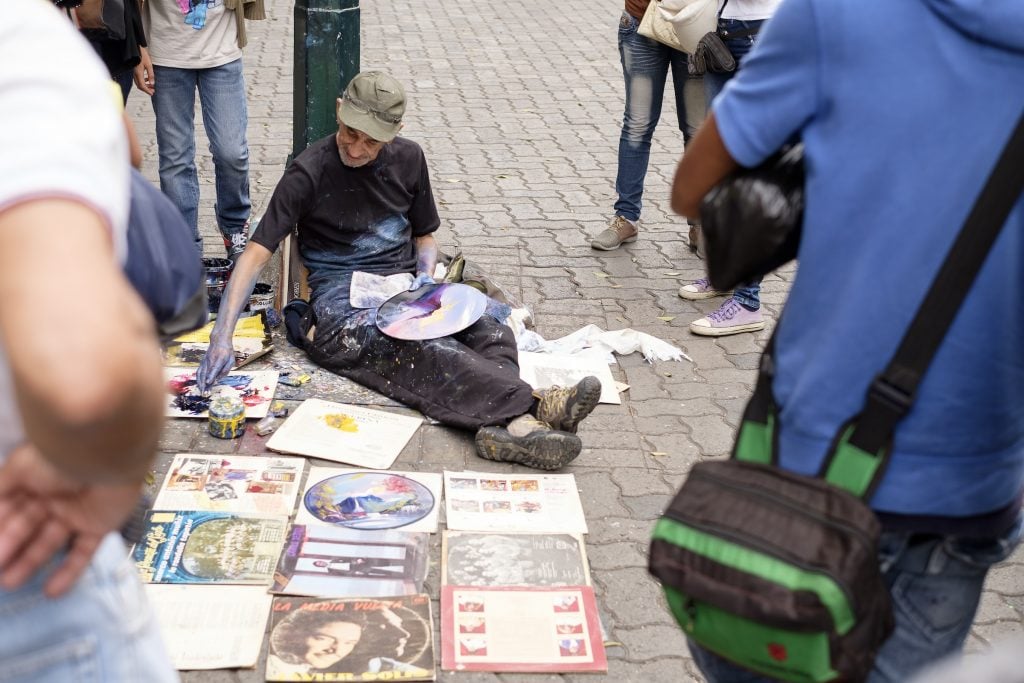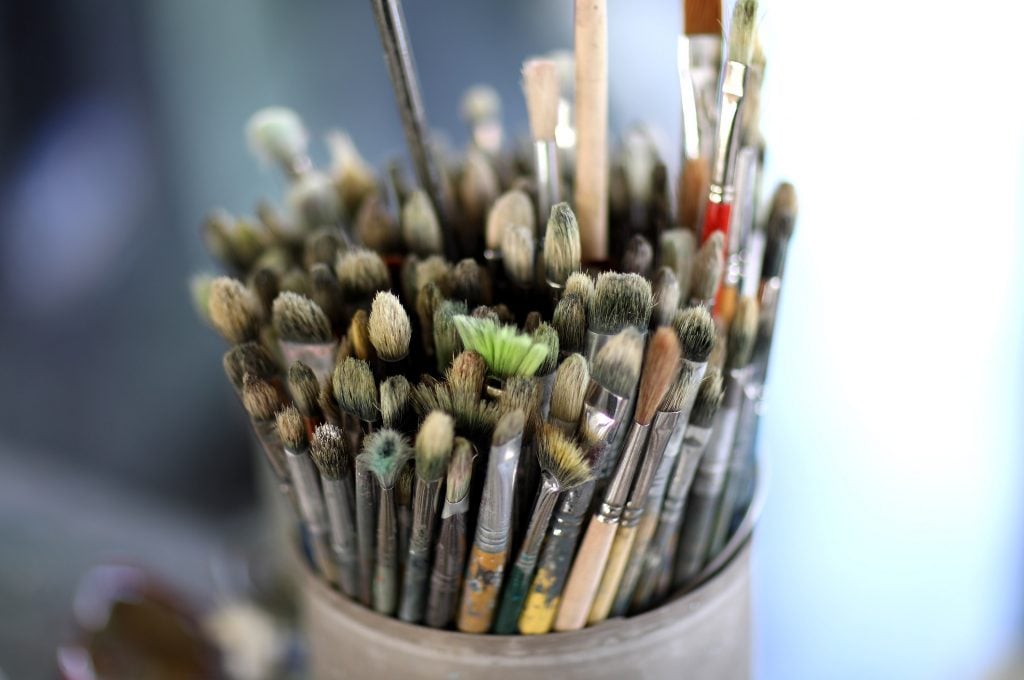Artists
U.K. Artists’ Earnings Dropped 40 Percent Since 2010. Will They Stick Around?
Some 80 percent of artists surveyed reported that their earnings were “unstable” or “very unstable.”

Some 80 percent of artists surveyed reported that their earnings were “unstable” or “very unstable.”

Sarah Cascone

The median annual income for artists in the U.K. is just £12,500 ($15,750), according to the U.K. Visual Artists’ Earnings and Contracts Report 2024. That’s down a troubling 40 percent since 2010, when median earnings came in at £16,000 ($23,200). This could spell trouble for the nation’s ability to retain its artist residents.
The Centre for Regulation of the Creative Economy (CREATe) conducted the independent study, which was commissioned and funded by the U.K. nonprofit Design and Artists Copyright Society (DACS). It surveyed 1,241 artists across the nation who are DACS members, some 80 percent of whom reported that their earnings were “unstable” or “very unstable.”
“There’s a really stark picture drawn by this report,” DACS CEO Christian Zimmermann told the Guardian, which first shared the report’s findings. “The average earning of £12,500 per year is shocking; it’s under the minimum wage and that’s not a viable career really.”
Respondents included artists in a wide range of mediums, from painting and sculpture to photography and illustration. Nearly 65 percent of artists, the study found, are actually making markedly less than the nation’s full-time employees working for minimum wage, who bring in £23,795 ($29,900) annually. (The median income level for artists is 47.5 percent below that.)

An artist’s paints in his London studio. Photo by Tim P. Whitby/Getty Images.
Just 2.8 percent had “very stable” income, with illustrators being the most likely to have a steady stream of income.
The bad news doesn’t stop there. If you’re a woman artist in the U.K., you can expect to earn about 40 percent less than your male counterparts. And the median income for disabled artists is an even more paltry £3,750 ($4,700), or 70 percent less than artists without disabilities.
Gay and lesbian artists, meanwhile, earn 20 percent less than those who are straight, and artists who identify as bisexual or another sexual orientation are at 40 percent below the overall median. The percentage of artists who identified as other than straight was 4.8 percent, compared to 1.3 percent of the general population.
On the other hand, artists surveyed were overwhelmingly white, at 86 percent. Asian artists had the lowest median self-employed income, at just £5,625 ($7,000), compared to £7,500 ($9,400) for Black artists and £12,500 ($15,750) for white artists.

An artist’s paintbrushes in his London studio. Photo by Tim P. Whitby/Getty Images.
And even artists working second and third jobs are struggling, earning an average of £17,500 ($22,000). The nation’s average income, by comparison, is about £37,000 ($46,500).
Unsurprisingly, most of those surveyed are likely able to continue working as an artist in part because they come from money. Over 53 percent of respondents were born into “a socio-economic background associated with the highest level of privilege,” as opposed to just 23 percent of the general population, according to the report. And those artists who don’t come from privilege typically earn 40 percent less than those who do.
One thing that did not seem to affect income, however, was higher education—artists with a master’s or PhD actually reported earning less than those who had only a college degree.
Among the factors that have likely contributed to the precipitous drop include funding cuts, inflation, and artificial intelligence, as A.I. has become more capable of quickly generating realistic-looking imagery for a wide variety of uses.
“It’s very tempting to lay the blame at the feet of A.I.,” Amy Thomas, a University of Glasgow researcher who worked on the report, told the Guardian, “but I think it is the straw that broke the camel’s back. It’s like we’ve been playing a game of KerPlunk where you keep taking out different bits of funding and see how little you can sustain a career with.”
The report’s discouraging findings suggest there could be a “talent drain” as visual artists seek economic opportunity outside of the nation.
“There’s a real discrepancy between the U.K. and other countries,” Zimmerman said. “People might have to leave because there are better conditions, particularly in the EU.”